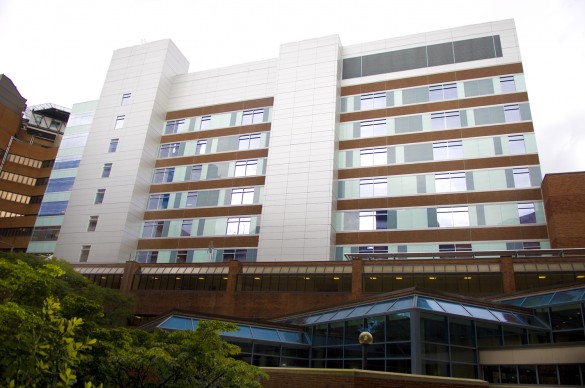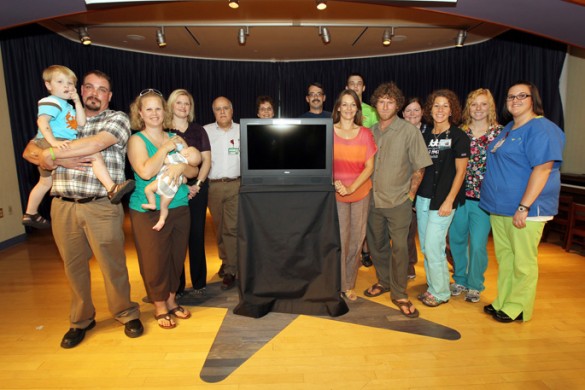
The 10th floor of Vanderbilt University Medical Center’s Critical Care Tower, housing a new myelosuppression unit, will open Oct. 27.
The Critical Care Tower, an 11-story, 329,000-square-foot addition to Vanderbilt University Hospital (VUH), originally opened in 2009 with 12 operating rooms and three patient care units.
Four floors were shelled for future growth, and the 10th floor is the latest of these to be readied for occupancy.
Specializing in stem cell transplants and malignant hematology, the new unit grows from 27 beds currently on 11 North to 34 beds in the Critical Care Tower.
“This unit will be a wonderful addition to our hospital,” said Pam Jones, MSN, R.N., chief nursing officer and associate hospital director of VUH.
“The space and facilities have been planned to the last detail to provide a therapeutic environment for these vulnerable patients and families. The leaders, physicians and staff have done an exceptional job and we are very excited about the opening,” Jones said.
The unit meets Centers for Disease Control and Prevention guidelines for a protective area for immunosuppressed patients. It is a positive pressure environment, which means air will flow out of the unit instead of in, preventing airborne microorganisms from infecting patients.
The new floor will have much the same layout and finishes as existing Critical Care Tower units, and the emphasis on patient- and family-centered care is especially important for this population.
“Our patients have a very long length of stay; most for two to three weeks, but some for a month or more,” said Carol Eck, R.N., MBA, administrative director of the Vanderbilt-Ingram Cancer Center. “This new unit has dedicated space for the caregiver, which is such a valuable thing for this set of patients.”
Caregivers will have access to showers and laundry facilities, and there is a dedicated family zone in each of the patient rooms.
All rooms are private and average 320 square feet. In addition to the family zone, there are staff and patient zones. The staff zone provides plenty of space for caregivers to work around the bedside, and there is a computer in every room for documentation. The patient zone has the latest technology and safety measures.
The unit’s layout has been customized for the hematology/oncology population. The waiting area has been moved within the unit so patients can visit with friends and family inside the positive pressure environment.
A rehabilitation room has been created, with a recumbent bicycle, elliptical machine and ballet barre.
“Oncology patients can get very debilitated, and we fight against that at every opportunity. Having physical therapy and the space to do it is very important,” said David Morgan, M.D., medical director of the unit.
Additional nurses, care partners and medical receptionists have been hired to cover the added beds, and all staff have undergone hands-on training to prepare for the move. A “Day in the Life” exercise on Oct. 18 put staff through mock scenarios to practice working in the new area.
“Staff has been very active in helping determine what their needs will be on the unit and where things should go. We’ve also taken full advantage of insight from all the units that have moved in ahead of us,” said Donna Copeland, MSN, R.N., unit manager.
“We currently work in a circle and will move to two long hallways, so that will take some adjustment, but we’ve been preparing for the new workflow. Everybody is so excited about moving and having more space.”
The move will begin at 9 a.m. on Oct. 27 and is expected to conclude by 3 p.m. Extra staff will be on hand to form sending and receiving teams, and Volunteer Services will be available to assist families in the move.
The space on 11 North vacated by the opening of the 10th floor will be refurbished and reopen around the end of November as a 27-bed hematology/oncology unit for patients who do not need a positive pressure environment.
“These patients are currently scattered all over the hospital. This will free up medicine beds and let the patients be cohorted together with specially trained nurses,” Eck said.















